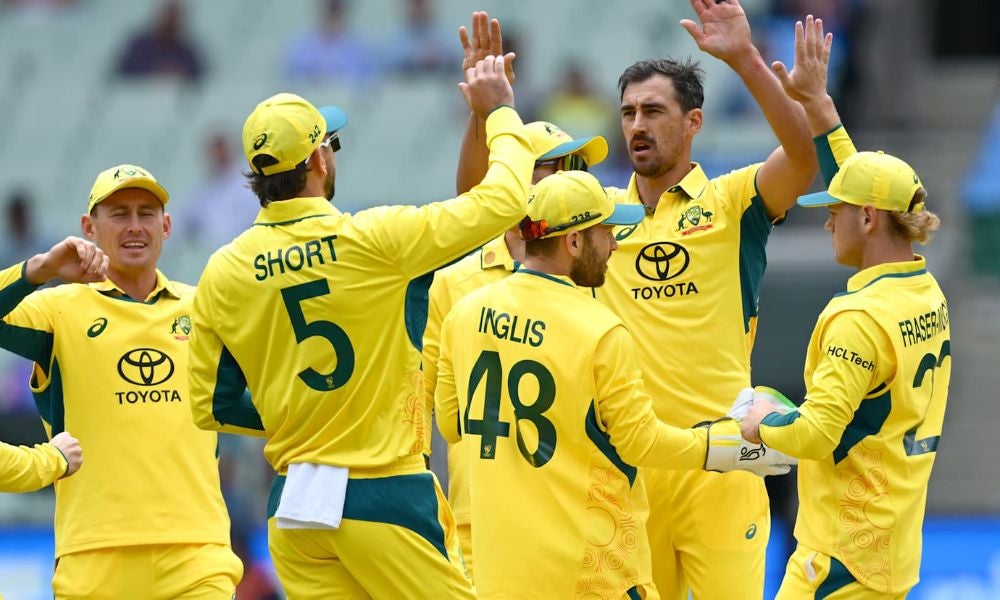Cricket's billion-dollar evolution: Business lessons from the pitch
Download The Business Of podcast on your favourite podcast platform.
Former cricket star and now commentator Lisa Sthalekar explores how the business of cricket is evolving and explains what leaders can learn in the process
The global cricket market continues to expand at a substantial rate. Recent projections indicate the industry will be worth $6.1 billion in 2025, cementing its status as one of the most valuable sporting businesses globally. This expansion stems from diverse revenue streams, including broadcast rights, sponsorships, ticket sales, and corporate memberships.
Cricket's economic significance extends beyond traditional cricket-playing nations, with the sport gaining popularity in emerging markets across Asia, Europe and North America. The sport's evolution from traditional five-day Test matches to shorter formats has opened new commercial opportunities with broadcasters and sponsors seeking to capitalise on cricket's growing global appeal.
The financial ecosystem now supports professional leagues across multiple continents, creating year-round competition schedules and expanded career pathways for players beyond national representation, according to former cricket star turned commentator, Lisa Sthalekar, who was recently interviewed by Dr Juliet Bourke, Adjunct Professor in the School of Management and Governance at UNSW Business School for The Business Of, a podcast from UNSW Business School.
Player compensation structures evolve with T20 format
Cricket has undergone a fundamental transformation in how players earn income. In Australia, players receive contracts, match fees that vary by format (T20, One Day International, or Test match), winning bonuses, and marketing contracts for sponsor promotions. Personal endorsements provide additional revenue streams for prominent players.
The introduction of T20 franchise leagues created a paradigm shift in player earnings. "Last year, Mitchell Starc and Pat Cummins went for over $4 million for two months' work," says Ms Sthalekar, referring to the Indian Premier League auction. Players now have opportunities to generate income beyond national representation through participation in multiple franchise leagues worldwide.

This represents a significant change in cricket's economic structure, as Ms Sthalekar observes: "Once upon a time, you could only generate through the vertical, and that's through your state, county, then Australia, and then obviously, however well you do sponsors that come now, players can go across the horizontal, so you don't have to necessarily play for your country to be able to generate a decent income."
T20 cricket: Market expansion through innovation
The development of T20 cricket exemplifies successful market innovation in sport. This format, lasting approximately three hours rather than multiple days, emerged in response to changing consumer preferences. The first T20 international match occurred in 2004 between England and New Zealand women's teams, followed by men's adoption.
"So T20 was the short, fast, on-steroids version, three hours in and out, you get your excitement. The pitches are flat, so the batters score runs, hit sixes all the time, and you can have your entertainment and be done with it, and move on," explains Ms Sthalekar.
The format gained commercial traction with the launch of the Indian Premier League (IPL) in 2008, after India's victory in the first T20 World Cup. The IPL demonstrated the financial potential of shorter format cricket, prompting similar competitions worldwide.
Audience diversification and capturing new market segments
T20 cricket succeeded in attracting different demographic groups compared to traditional Test matches. Cricket authorities recognised the opportunity to expand their audience base through this alternative format. "It's definitely brought in a newer market, a new audience, a younger audience. And I guess the hope that cricket had was that they fall in love with T20 cricket or a certain player, and guess what? That player normally plays one-day cricket or test cricket? So can you follow that star into the other formats?" Ms Sthalekar says.
Read more: Lessons in leadership and high performance from the Sydney Swans
The Women's Big Bash League further demonstrates audience diversification, attracting families with young children who benefit from the more relaxed viewing environment compared to stadium seating. This illustrates how format variations within the same sport can target distinct consumer segments.
Recent evidence suggests crossover audience development, with new fans discovering Test cricket through T20 exposure. The Border-Gavaskar trophy series between Australia and India demonstrated this pattern when young Sam Konstas became an overnight sensation. As Ms Sthalekar recounts her experience at the MCG, teenage fans were specifically there to see Konstas play, and his social media following grew exponentially following his performance, showing how individual stars can create pathways between different cricket formats.
Brand ambassador development in modern sport
Cricket now places greater emphasis on developing player personalities as brand assets. The sport has evolved from marketing just the game itself to strategically highlighting individual personalities who can connect with diverse audience segments. Cricket Australia and other governing bodies invest in promoting player profiles through digital content, broadcast features, and community engagement initiatives, creating recognisable stars who transcend the sport.
Social media platforms have revolutionised this approach, enabling direct connections between players and fans. These platforms allow cricketers to build personal brands independent of traditional media gatekeepers. "I think social media had a huge impact because you had a chance to get to know the person individually, because you weren't getting that from mainstream media. You know, there was not the ability to connect with those individual athletes," Ms Sthalekar observes.

Cricket broadcasters have embraced this personality-driven approach by implementing innovations that bring viewers closer to players. On-field microphones, player interviews during matches, and behind-the-scenes content create more intimate fan connections. "The fans are wanting more and more of the athletes," notes Ms Sthalekar, describing how cricket continually evolves to "get the audience closer to the action... apart from being on the field themselves.
Business insights from cricket's evolution
Cricket's transformation offers valuable lessons for business professionals across industries. The sport demonstrates how organisations can innovate their product offerings to meet changing consumer preferences while maintaining core business identity.
First, the development of T20 cricket illustrates successful format innovation. Rather than replacing traditional Test matches, cricket authorities created complementary products targeting different audience segments. Businesses facing time-pressed consumers might similarly develop streamlined offerings alongside comprehensive services.
Second, cricket's evolution highlights the importance of personality-driven marketing. Modern consumers seek authentic connections with brands through individual representatives. Companies can benefit from developing employee brand ambassadors who humanise corporate identities and forge emotional connections with customers.
Subscribe to BusinessThink for the latest research, analysis and insights from UNSW Business School
Third, cricket's distribution model demonstrates the importance of equitable stakeholder relationships. The tension between international fixtures and domestic leagues resembles challenges many organisations face when balancing global and local priorities. Creating structures that appropriately reward value generation while supporting system-wide development remains essential.
Finally, cricket's embrace of technology to enhance viewer experiences offers a template for customer engagement. From stump cameras to player microphones, the sport continually seeks ways to bring audiences closer to the action. Similarly, businesses should explore how technology can create more immersive and personalised customer experiences.
As these lessons demonstrate, cricket's business transformation offers insights extending far beyond the boundary rope. By adapting to changing consumer needs, developing strong personal brands, creating equitable value distribution, and embracing technology, cricket provides a playbook for organisations seeking sustainable growth in rapidly evolving markets.
